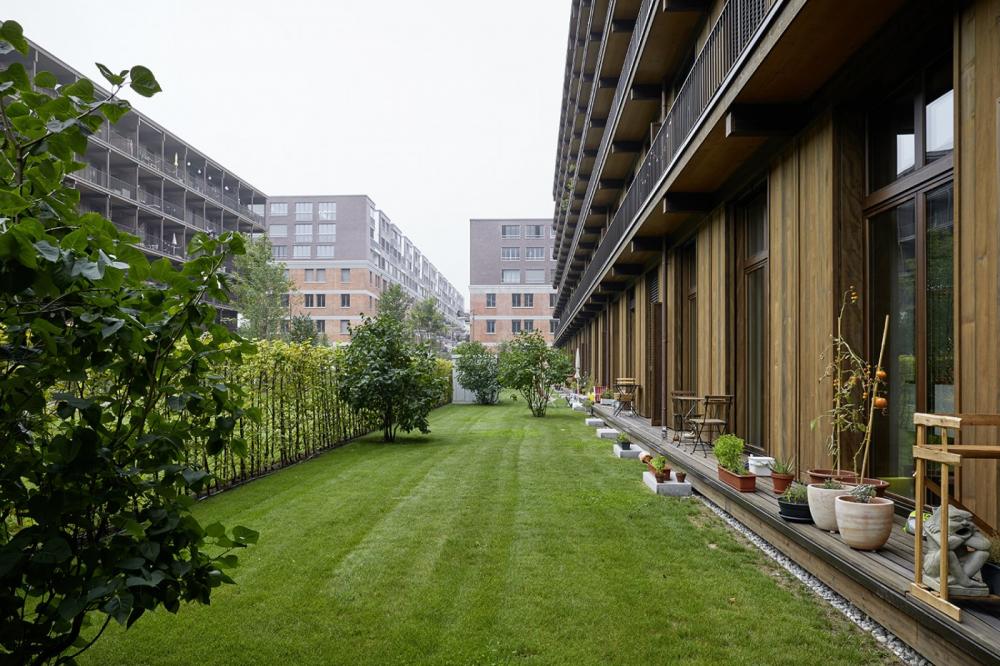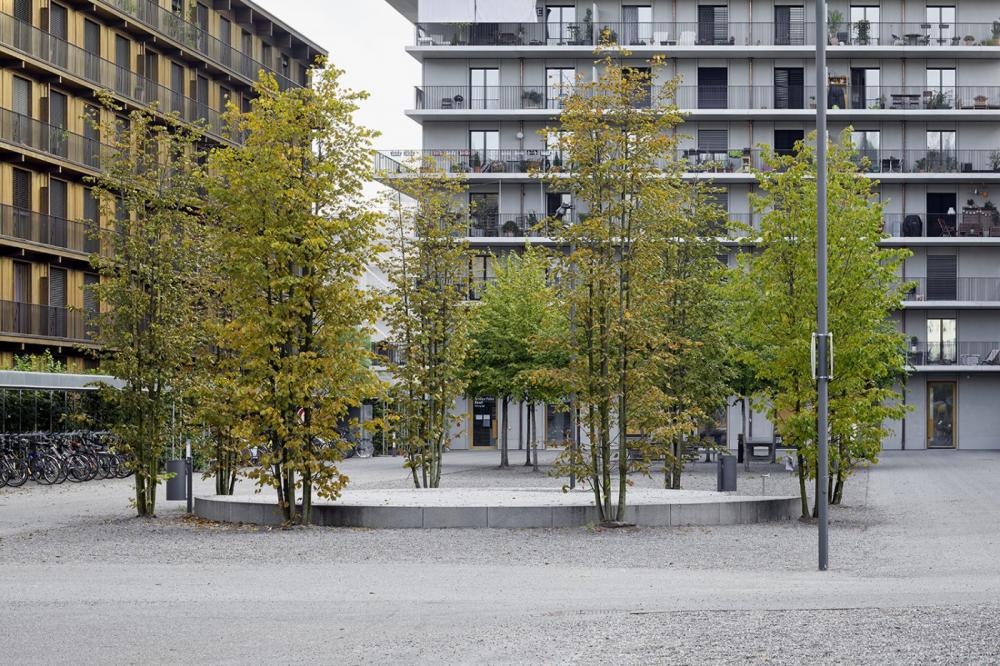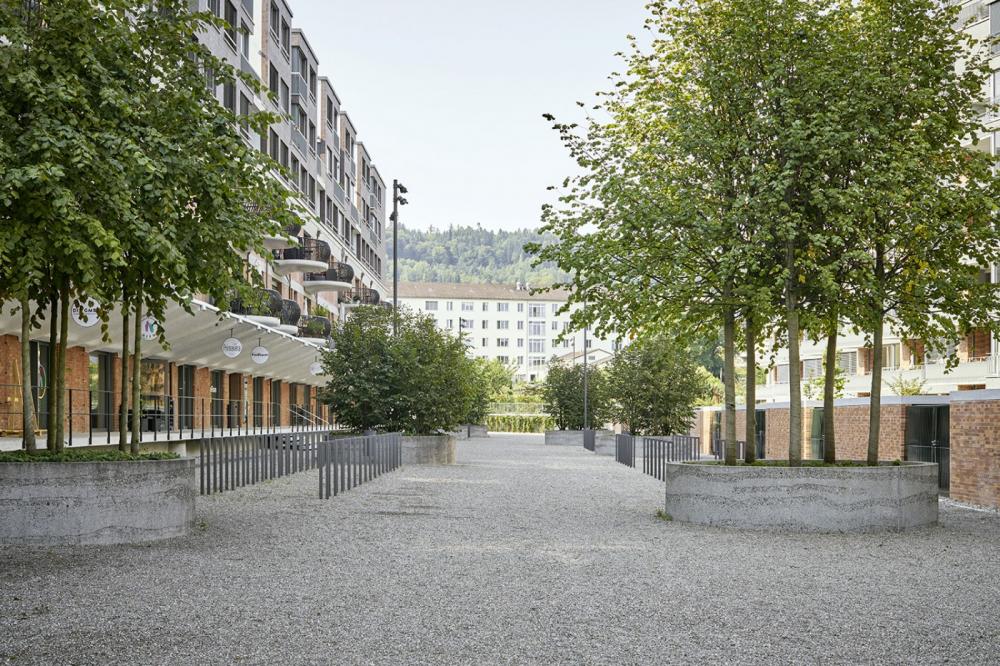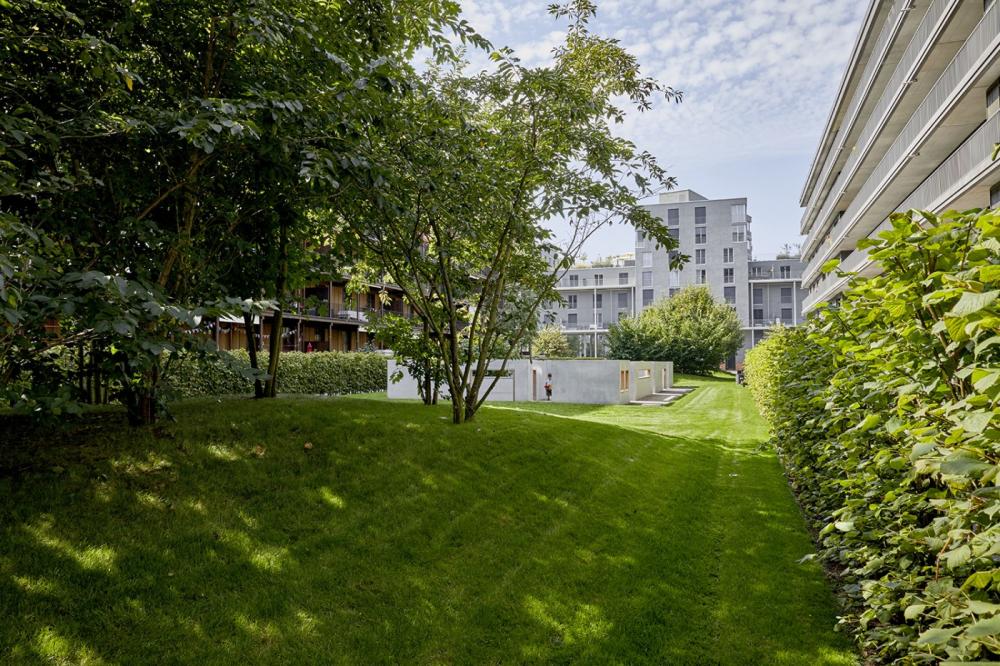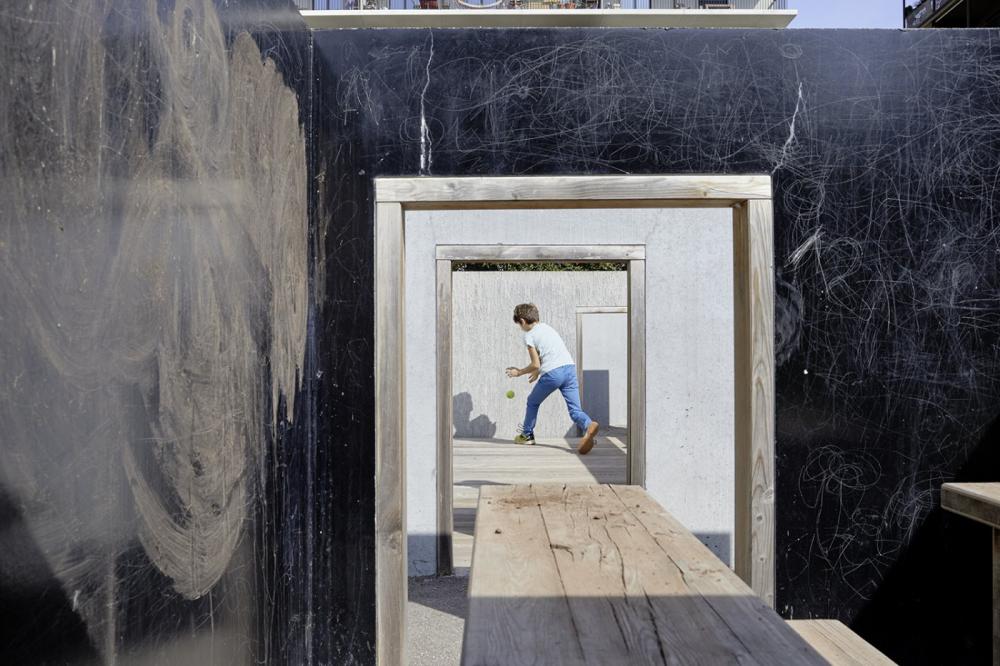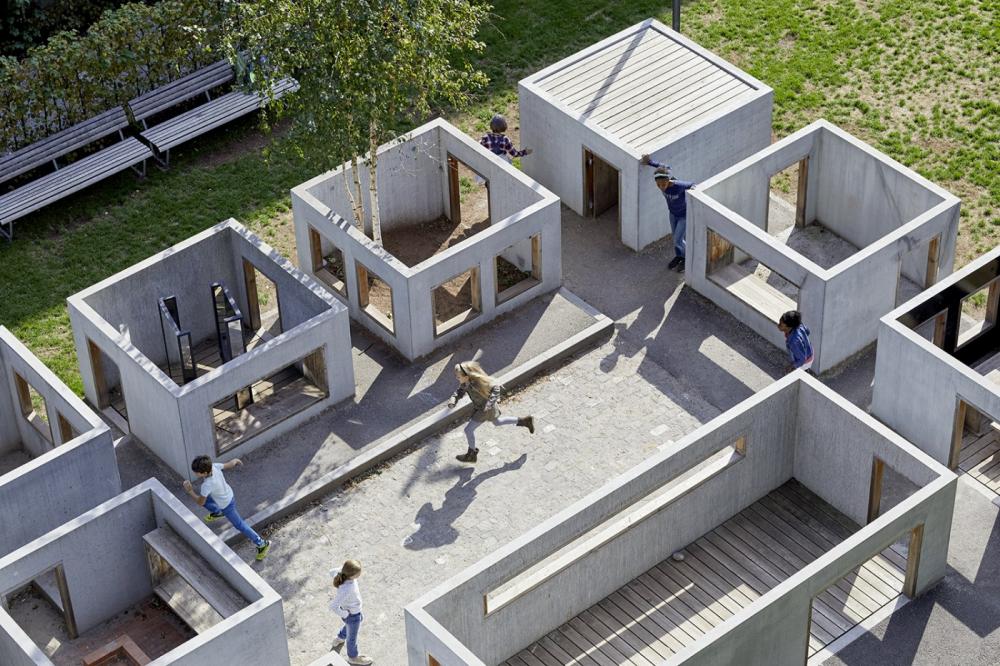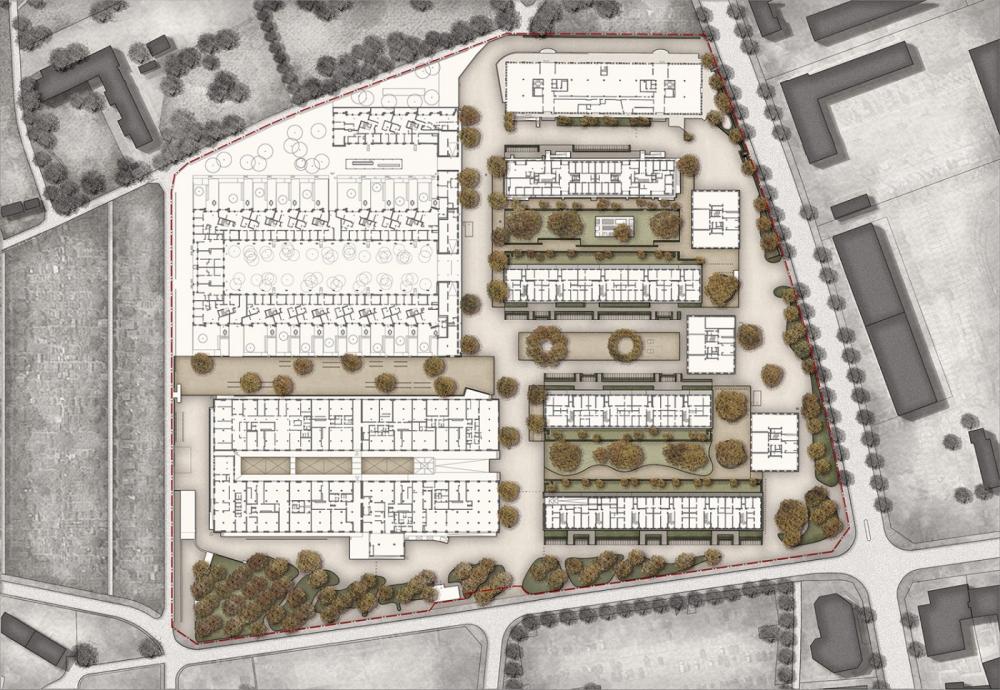Freilager, Albisrieden
Bauherr
Zürcher Freilager AG, Zürich
Kollaboration
Meili, Peter & Partner Architekten, Rolf Mühlethaler Architekten, Bern, office haratori GmbH, Zeno Vogel, Mercè Portell, Zurich
Auf dem Areal des Zürcher Zollfreilagers, einem ehemals exterritorialen Gebiet der Schweiz zur steuerfreien Lagerung von Waren wie Autos, Kaffee oder Teppichen, entstand ein neues Wohn- und Gewerbequartier. Die Öffnung ermöglichte den Bau öffentlicher Plätze, Höfe und Promenaden am Übergang zwischen der dichten Stadt, den Gartenquartieren und den bewaldeten Hängen des Uetlibergs. Der ehemals verschlossene Ort wurde so zu einem wichtigen Bindeglied im Stadtkörper. Zwei übergeordnete Themen bestimmen das Konzept der Aussenräume: Heckenkabinette strukturieren den Freiraum eindeutig in private und öffentliche Bereiche, zugleich werden in den bis zu drei Meter hohen, zu raumhaltigen Wänden und Dächern formierten Hecken mehrere Hundert gedeckte Veloabstellplätze und Sitzbänke untergebracht. Daneben finden sich in zwei der Gartenhöfe besondere Spielbereiche, die ausschliesslich den Kindern vorbehalten sind.
Die Lieferung eines neuen Haushaltsgeräts ist in einer Familie oft Grund zur doppelten Freude. Die einen freuen sich über das, was im Paket ist, die anderen über das, was aus dem Karton entstehen könnte. Für Kinder ist auch ohne Anleitung offensichtlich, dass diese Schachtel mehr ist als reine Verpackung. Der Karton wird in Beschlag genommen, Türen und Fenster aufgemalt oder ausgeschnitten und von den Kindern bezogen: das Modell eines Hauses. Entscheidend dabei ist der Wechsel im Massstab und in der Verantwortung: Die Grösse des Hauses entspricht der Grösse der Kinder. Türen und Fenster sind ohne Hilfe erreichbar, die Einrichtung ist der eigenen Entscheidung überlassen. Ein Möglichkeitsraum für die Fantasie und ein für die Erwachsenen nicht zugänglicher Ort.
Im Freilager wird auf die immer gleiche Ansammlung von klassischen Spielelementen wie Rutschen, Schaukeln und Wippen weitgehend verzichtet. Das eigentliche Spielelement ist eine Übersetzung des beschriebenen Kartons, der zu einer Stadt und einem Dorf vervielfältigt wird. Aus dem selbst gebastelten, isolierten Modell der Kinder wird ein abstraktes, präzises Modell aus Beton, welches beides ist: sowohl Teil als auch Modell der umgebenden Stadt.
Stadt und Dorf der Kinder
Eingebettet in das Neubauquartier aus Hoch- und Langhäusern, liegt die Stadt der Kinder in einer Ebene. Die Regeln des umgebenden Quartiers, die bauliche Dichte, die Vielfalt an Nutzungen und die Gliederung durch Freiräume wie Strassen und Plätze gelten auch hier, lediglich der Massstab ist ein anderer. Die Gebäude aus Beton sind vorfabriziert, haben ein einheitliches Grundmass und Türen und Fenster an identischer Stelle. Allein die Position zueinander schafft Vielfalt. Hölzerne Fenster- und Türrahmen wandeln das Bild und machen aus den Rohbauten einfache Häuser. Wohnhaus, Schule, Geschäft, Fabrik, Baustelle und Wäscherei unterscheiden sich durch den Bodenbelag, die Wandgestaltung oder die Möblierung, zum Beispiel eine Bank mit Tisch oder eine Theke. Das Raster der Stadt bildet ein primäres, auch für die Erwachsenen noch begehbares Erschliessungsnetz. Über die Türen und Fenster sind die Spielhäuser untereinander verbunden, ein sekundäres, nur für die Kinder begehbares System.
Ebenso wie die das Areal prägenden Hecken private Gärten von gemeinschaftlichen Nutzungen trennen, werden auch die Territorien der Gebäude im Dorf der Kinder durch Zäune, Hecken oder auch nur durch Strauchgruppen abgesteckt. Obschon die Häuser von aussen betrachtet einheitlich erscheinen, sind sie nicht identisch: Die Gestaltung der Innenwände mit Spiegeln, Putzstrukturen oder Holztäfer schafft unterschiedliche Situationen. Was für die Erwachsenen nur ein Spielgerät, das Modell eines Gebäudes darstellt, ist für die Kinder real und Teil des Alltags. Wo endet das Vorbild und wo beginnt das Modell?




